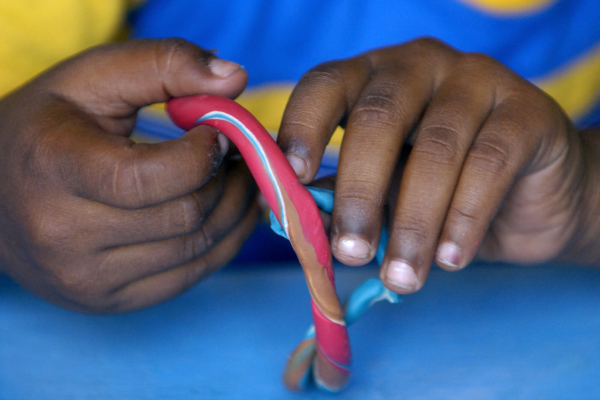In recent publication of the professional academic journal “Device”, a research paper introduces a newly developed medical interface electrode material in the United States, which is expected to replace traditional materials that are costly and have low durability.
Traditional medical detection instruments use high conductivity materials such as graphene, silver nanowires, and organic polymers for detection electrodes. However, these materials have drawbacks such as high cost, low durability, fragility, and complex manufacturing processes.
The Bioengineering Department of the University of Massachusetts Amherst in the United States has developed a highly conductive “Squishy Circuits” flexible circuit using common household items, and it is being applied to electrodes in health monitoring devices.
As a new type of biological interface electrode material, Squishy Circuits (SC) not only has characteristics of low cost, low impedance, and high conductivity, but it also can self-repair. Its durability and functionality surpass traditional materials significantly.
This SC electrode is mainly made of a certain ratio of flour, water, salt, cream of tartar (a baking powder), vegetable oil, and a small amount of food coloring, produced according to specific steps and mixing order. To verify the conductivity and resistance of SC, researchers conducted a series of tests on human skin and pig skin using typical bioelectronic systems. The results show that the impedance of this SC electrode at a 10kHz frequency is much lower than the most advanced gel electrodes on the market (lower impedance is better).
Furthermore, they found that the impedance of SC at a 1kHz frequency is 4 times lower than pure copper foil and 10 times lower than gel electrodes containing silver chloride (AgCl).
To verify the real-time applicability of SC electrodes, researchers placed them on top of medical-grade tape (with electrically interconnected copper leads) to measure data from various parts of the human body. The results show that these SC electrodes can effectively and stably capture signals generated by brain activity (electroencephalogram, EEG), heart activity (electrocardiogram, ECG), eye movement signals (electrooculogram, EOG), and muscle activity signals (electromyogram, EMG).
They also found that the signal-to-noise ratio of SC electrodes is higher than gel electrodes (a higher signal-to-noise ratio means clearer signals), enabling devices to identify signals more accurately.
Even when worn on the body for long periods (24 hours), SC electrodes can still monitor body data effectively because they absorb body sweat, preventing damage from dryness. If they do become dry, simply soaking them in water can restore functionality. Additionally, even when cut into multiple segments, the SC electrodes can operate normally after being reconnected, and their performance remains stable in an environment of 60°C.
In terms of cost, this material is only about $0.01, providing economic advantages over commercial gel electrodes (costing $0.25-$1).
Dmitry Kireev, an assistant professor in Bioengineering at the University of Massachusetts Amherst and a senior author of the paper, stated to the university newsroom that this electrode material is superior in measuring quality compared to other electrode materials because of its low impedance. The lower the impedance between the electrode and human tissue, the better the conductivity between them, resulting in an improved ability to measure bioelectric potentials. If needed, these electrodes can be easily fabricated at home or in high school laboratories, making them highly advantageous for wider adoption.

